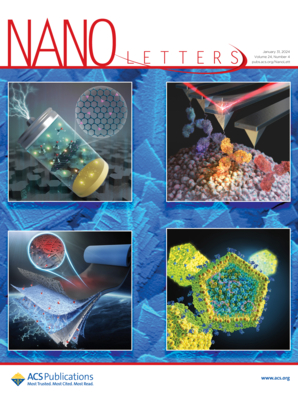Gas Evolution Analysis of Sulfide-Based All-Solid-State Li-Ion Battery.
IF 9.1
1区 材料科学
Q1 CHEMISTRY, MULTIDISCIPLINARY
引用次数: 0
Abstract
Sulfide-based all-solid-state Li-ion batteries employing Ni-rich cathodes have emerged as the most promising candidate for high specific capacity and excellent safety. Nevertheless, the unstable solid-solid interface between sulfide electrolytes and Ni-rich cathodes induces detrimental side reactions, which are primarily responsible for rapid capacity fading and even pose significant safety risks. Herein, in situ mass spectrometry is employed to systematically investigate the gas evolution throughout the electrochemical processes and thermal runaway scenarios. The electrolytes' intrinsic stability, operational temperature, and cell fabrication parameters have been studied in depth on how to influence solid-solid interfacial degradation mechanisms. The analysis of experimental results reveals dominant gaseous byproducts including H2S, O2, CO2, and SO2 during electrochemical operation. Thermal runaway conditions additionally generate sulfur allotropes, which challenges the conventional assumption of absolute safety in sulfide-based systems. This work provides crucial evaluation methods for developing safer high-specific-energy batteries by guiding the rational design of high-performance electrolyte and cathode materials.硫化物基全固态锂离子电池气体演化分析
采用富镍阴极的硫化物基全固态锂离子电池已成为高比容量和优异安全性的最有前途的候选材料。然而,硫化物电解质与富镍阴极之间不稳定的固-固界面会引起有害的副反应,这是导致容量快速衰减的主要原因,甚至构成重大的安全风险。本文采用原位质谱法系统地研究了电化学过程和热失控过程中的气体演化过程。深入研究了电解质的固有稳定性、操作温度和电池制造参数对固-固界面降解机制的影响。实验结果分析表明,电化学过程中主要的气体副产物包括H2S、O2、CO2和SO2。热失控条件还会产生硫同素异形体,这挑战了硫化物基系统绝对安全的传统假设。通过指导高性能电解质和正极材料的合理设计,为开发更安全的高比能电池提供了重要的评估方法。
本文章由计算机程序翻译,如有差异,请以英文原文为准。
求助全文
约1分钟内获得全文
求助全文
来源期刊

Nano Letters
工程技术-材料科学:综合
CiteScore
16.80
自引率
2.80%
发文量
1182
审稿时长
1.4 months
期刊介绍:
Nano Letters serves as a dynamic platform for promptly disseminating original results in fundamental, applied, and emerging research across all facets of nanoscience and nanotechnology. A pivotal criterion for inclusion within Nano Letters is the convergence of at least two different areas or disciplines, ensuring a rich interdisciplinary scope. The journal is dedicated to fostering exploration in diverse areas, including:
- Experimental and theoretical findings on physical, chemical, and biological phenomena at the nanoscale
- Synthesis, characterization, and processing of organic, inorganic, polymer, and hybrid nanomaterials through physical, chemical, and biological methodologies
- Modeling and simulation of synthetic, assembly, and interaction processes
- Realization of integrated nanostructures and nano-engineered devices exhibiting advanced performance
- Applications of nanoscale materials in living and environmental systems
Nano Letters is committed to advancing and showcasing groundbreaking research that intersects various domains, fostering innovation and collaboration in the ever-evolving field of nanoscience and nanotechnology.
 求助内容:
求助内容: 应助结果提醒方式:
应助结果提醒方式:


